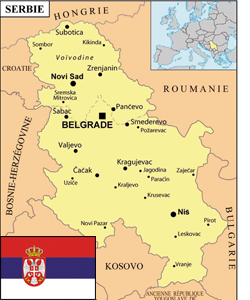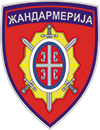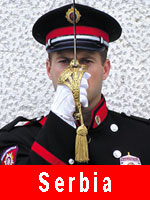
Serbian Gendarmerie
|
1860 Year of creation: Ministère de l’Intérieur Workforce: 3 734 General manager: M. Goran DRAGOVIC Address: Komanda Žandarmerije Tél.: 00 381 11 369 29 12 Email: goran.dragovic@mup.gov.rs Public relations: Capitaine Milos VRACAR Tél.: 00 381 11 306 20 00 - poste 417-52 Email: milos.vracar@mup.gov.rs Website: http://www.mup.gov.rs/wps/portal/sr 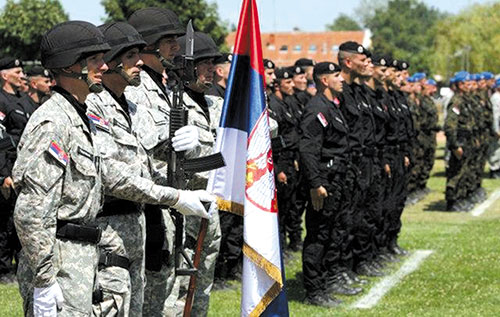
|
History
The Zandarmerija, the name of which is directly inspired by the French gendarmerie, is created on May the 3rd 1860 within the Principality of Serbia established in 1815. The Serbian gendarmes participate in the fight against the Turks. From June the 15th to 17th 1862, they play a crucial role during the small war launched by the Belgrade Cukur fountain affair. The hundred gendarmes confronted with superior Turkish strengths in number contribute to save the city and Serbia. It is in commemoration of these fights that the June 15th date was adopted as the Serbian gendarmerie celebration day. The corps, consisting of 120 members at the origin, forms itself from a series of statutory texts dating from 1864 and 1884. At the beginning of the World War I, the Serbian gendarmerie, organized in battalions, participated in the fights in particular in July 1914 in the Belgrade defence in front of the Austria-Hungary attack. Afterwards, his role was mainly a provostship one. Reorganized in October 1918, the Serbian gendarmerie resumed then its peacetime missions. On February the 1st 1920, a Gendarmerie non-commissioned officers’ school is opened in Sremska Kamenica. During the Second World War, the Serbian gendarmes collaborate with Nazi Germany and track down the Serbian resistant. The corps is dissolved in 1945 on the Allies’ order. After the October 2000 events and within the framework of the Republic of Serbia democratic government implementation, Home Secretary Dusan Mihailovic reconstitutes the Zandarmerija on June 28th 2001. The Zandarmerija staff distinguished itself in the arrest of the Prime Minister Zoran Djindjic’s murder suspects on March 12th 2003 in Belgrade.
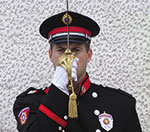 Organization
Organization
The Zandarmerija is a Ministry of the Interior active direction.
Central Organization
The general staff, the nautical unit and the support (theoretical strength: 200) are located in the Belgrade detachment premises.
Zandarmerija General staff:
• Zandarmerija Commander (DGGN);
• Zandarmerija Deputy Commander;
• Zandarmerija Commander’s assistants;
• Zandarmerija Commander’s advisers;
• Corporate, technical and administrative affairs department;
• Service legal functioning control department;
• Operational headquarter;
• Operational planning affairs department;
• Training department;
• Unit security and protection department;
• Intelligence matters department;
• Information and telecommunication technologies department;
• Health security department;
• Logistics department.
The Belgrade Zendarmerija detachment, integrates a VIP protection unit, which takes care of some high personalities, buildings and diplomatic and consular representations protection.
The Nis and Kraljevo Zendarmerija detachments are including the Jazenovo and Vlasina training centres.
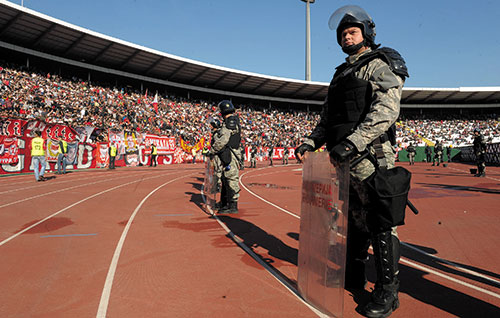
Territorial organization
The Serbian Zandarmerija is distributed on the national territory in four detachments:
• Belgrade (theoretical strength: 950);
• Nis (theoretical strength: 750);
• Kraljevo (theoretical strength): 750);
• Novi Sad (theoretical strength): 750).
Every detachment includes an operational section, a section in charge of intelligence and counter-intelligence, a training section, a medical section, a logistic section, a connection section.
Specialized Training
The Zandarmerija also includes a heliborne unit (mutualized at the Ministry of the Interior level) and a nautical unit.
Missions

The Zandarmerija represents the Ministry of the Interior elite unit responsible for the most exposed tasks, in the field of fighting against terrorism and the maintenance of law and order, in particular in border areas with Kosovo, Bosnia and Montenegro (Sandjak region). Its main missions are the following ones in:
• participating in the fight against terrorism (intelligence, prevention, repression/suppression in support to the Ministry of the Interior antiterrorist units - SAJ and PTJ);
• maintaining the law and order and possibly restore it during demonstrations gathering important crowds, in particular during sporting events;
• intervening in support of the SAJ and PTJ in case of taking of hostages and aviation hijacking;
• intervening during the riots in prison environment;
• arresting the very dangerous criminals as additional Criminal Investigation Department back-up;
• participating in restoring order at the side of the other police forces when the country general security is threatened.
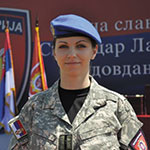 Staff
Staff
Not communicated.
Training institutions
Not communicated.
Main equipment
• Armament: Zastava CZ 99 pistols, assault rifles (Zastava M21 and Zastava M70), machine guns (Zastava M84 vehicle-mounted).
• Vehicles: SPAT 2/30 M-80, Land Rover Defender, Mercedes-Benz Class G, Pinzgauer, and English brand armed vehicles.
• Nautical means: Zodiac for patrol.
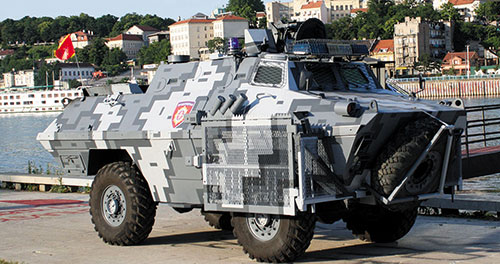
Cooperation
The French-Serbian police cooperation didn’t lean before 2009 on any particular legal basis. The agreement signed on November 18th 2009 improves the bilateral cooperation in the sphere of the police missions - whether it is about the support to the Serbian police forces training and for the improvement of their professional practices, the prevention and the detection of criminal acts or the fight against terrorism and organized serious crime.
The agreement allows the use of the usual technical cooperation mechanisms: training courses, study visit, missions of expertise, common exercises, exchanges of documentations and best practice, etc.
The French-Serbian internal security cooperation also enters the field of the strategic partnership agreement signed in Paris, on April 8th 2011.
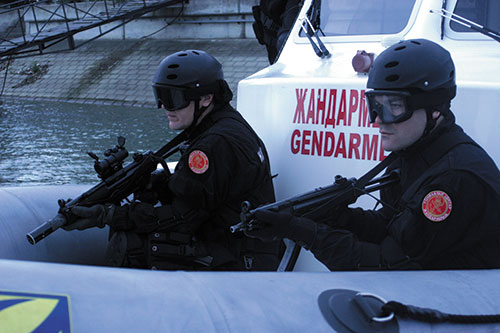
© The iconography was provided by the concerned gendarmeries

